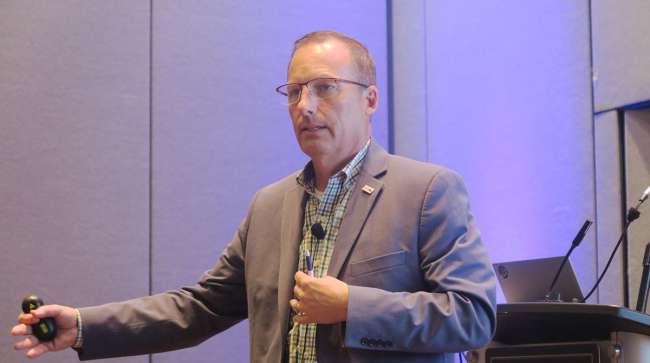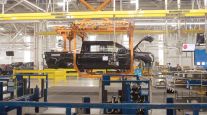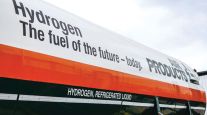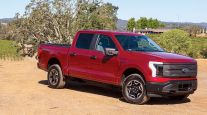Senior Reporter
NACFE Run on Less to Focus on Electric Depot Trucking

[Stay on top of transportation news: Get TTNews in your inbox.]
The North American Council for Freight Efficiency’s upcoming Run on Less program will focus on scaling electric trucks across a variety of market segments.
The three-week Run on Less, set to start on Sept. 11, will have a decidedly California feel, as seven of the eight fleets participating in the Electric Depot demonstration are based in the Golden State.
“Our goal with this event was to showcase fleets that are now deploying 15 or more trucks and we had hoped to have a wider geographic representation,” NACFE’s director of industry engagement, Dave Schaller, said. “The reality is that at this point the majority of fleets with 15 or more electric trucks are in California, but we believe they are a good representation of the benefits and challenges of deploying electric vehicles at scale.”
With its unique air quality challenges, California has been the most aggressive state in the country when it comes to implementing mandates concerning the expansion of zero-emission cars and trucks over the next 10-plus years.
NACFE said this year’s Run on Less will examine what it takes to scale up from one or two electric trucks to 15 or more. It will look at many of the challenges the trucking industry is facing when it comes to developing a charging network, the necessary infrastructure to do that, building grid capacity and resilience.
Participating fleets:
- Frito-Lay in Queens, N.Y.
- OK Produce in Fresno, Calif.
- Penske in Ontario, Calif.
- Pepsi Beverages in Sacramento, Calif.
- Performance Team Logistics in Commerce, Calif.
- Schneider in South El Monte, Calif.
- UPS in Compton, Calif.
- WattEV in Long Beach, Calif.
“We are excited to have these fleets … and look forward to sharing information on charging infrastructure, engagement with utilities, total cost of ownership management, truck performance, driver and technician training, charge management, and more to help the entire industry move to a cleaner freight future,” said Mike Roeth, NACFE executive director.
“In our vetting of the fleet depots for this run, we came across fleets that are on the cusp of scaling up the number of electric vehicles in their operation. While they did not meet the criteria for this year’s run, we still believe there are valuable lessons they can teach us,” Roeth says.
Leading up to Run on Less, NACFE is also running a 10-session Electric Depot Bootcamp, which will cover: electric truck developments, charging challenges, opportunities to extend range, electricity resiliency and availability, current and future regulations, and electric depot site planning and construction.
It will be conducted virtually, held biweekly from April through September.
This is the fourth version of NACFE’s Run on Less program. The first, Run on Less 2017, focused on longhaul routes. Run on Less Regional focused on 10 fleets hauling in a wide variety of regional haul applications. Run on Less-Electric was a real-world electric truck technology demonstration that featured 13 trucks.
NACFE recently released an extensive report looking at the likelihood of alternative fuels making an impact in the trucking industry as governments increase their regulation of tailpipe emissions and original equipment manufacturers develop engines to accommodate those changes.
NACFE said as the trucking industry moves toward zero-emission vehicles during the next several decades, its research finds that hydrogen-powered trucks are the best option to reach those long-term goals.
Want more news? Listen to today's daily briefing above or go here for more info
But while the Fort Wayne, Ind.-based research organization is bullish on hydrogen, its new report, “Hydrogen Trucks: Long Haul’s Future” also says current fuels — including diesel and alternatives now coming into the marketplace — will continue to play an important role in trucking’s future.
“This is something that’s a journey and we’re going to be taking it for a while,” NACFE Director of Emerging Technologies Rick Mihelic said on a conference call with reporters. “You’re going to need some solution to go the long distances. Driving 600 to 700 miles is not going to be possible with battery-electric [trucks] with heavy-duty payloads. It’s not the solution for every duty cycle, but it is a solution for part of the work that diesel engines are doing today.”

Mihelic
The report concludes that battery-electric and hydrogen are both needed to reach the zero-emission goals being set by governments in the United States and around the world. It says battery-electric vehicles will be best utilized for shorter distance and regional trips, while hydrogen offers the best potential for longer, over-the-road duty cycles.
It also says the transition to hydrogen fuel cell electric vehicles will take two decades and during that time, alternative fuels such as renewable natural gas and renewable diesel will be required to support the transition.




